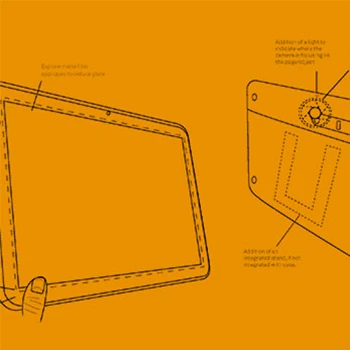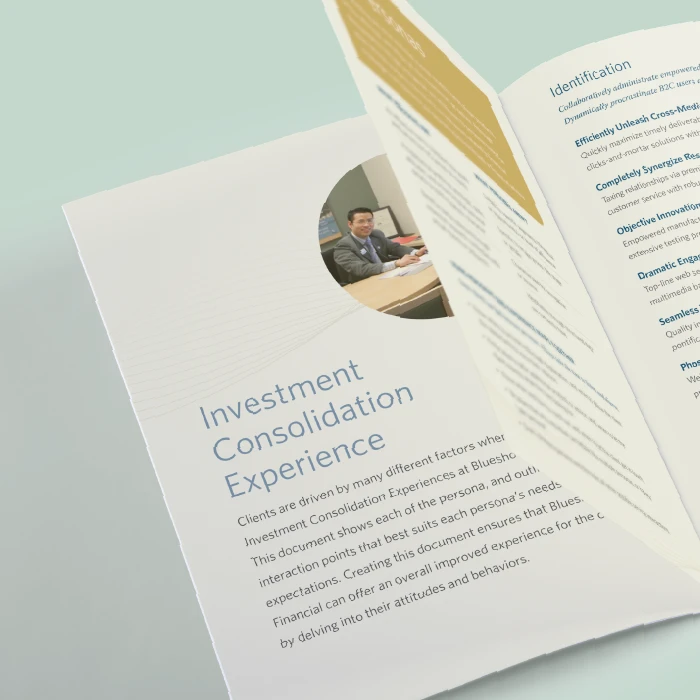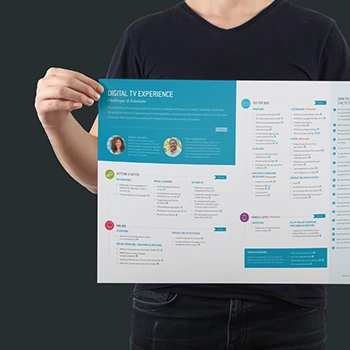What makes service experience research different from traditional user research?
Service experience research goes beyond understanding individual product interactions to examine how people move between products, content, and touchpoints that make up complete service experiences. Using the Experience Thinking framework, we research not just what users do, but how they bridge multiple products and content pieces in their service journey. This research focuses on the connectedness and flow between different experience components rather than isolated usability issues.
Tip: Evaluate research methods based on their ability to capture cross-touchpoint behaviors and emotional journeys, not just task completion metrics.
How does service research support the complete Experience Thinking framework?
Service research within Experience Thinking examines how people experience your brand promise through service interactions, how content supports or hinders service delivery, how product design affects service needs, and how service touchpoints connect into coherent experiences. We research the bridges between brand, content, product, and service experiences to understand the complete ecosystem. This holistic approach reveals opportunities that single-touchpoint research misses.
Tip: Plan research studies that examine multiple Experience Thinking quadrants simultaneously rather than researching service interactions in isolation from brand and product experiences.
What business problems does service experience research solve most effectively?
Service experience research addresses complex challenges where customer behavior spans multiple touchpoints: understanding why customers abandon service journeys, identifying why support costs remain high despite process improvements, revealing gaps between brand promise and service delivery, and discovering opportunities for service innovation. Research reveals the underlying experience patterns that drive these business outcomes rather than just measuring symptoms.
Tip: Frame research objectives around business outcomes and customer lifecycle progression rather than just operational metrics to maximize strategic value.
How do you determine what type of service research is needed for different business situations?
Research method selection depends on your current understanding, business constraints, and decision requirements. Discovery research using ethnographic observation and contextual inquiry works best when service experiences are poorly understood. Evaluative research through service testing and journey validation suits situations where you need to optimize existing experiences. The Experience Thinking approach helps identify which research will provide insights across brand, content, product, and service areas.
Tip: Assess your current knowledge gaps across the complete service ecosystem before selecting research methods to ensure you're addressing root causes rather than symptoms.
What role does observational research play in understanding service experiences?
Observational research captures authentic service behaviors that people often can't articulate in interviews or surveys. Ethnographic field observation, contextual inquiry, and service shadowing reveal tacit behaviors, emotional responses, and environmental factors that influence service experiences. These methods uncover the gap between what people say they do and what they actually do when using services across different contexts and situations.
Tip: Include observational research in your service studies because people frequently can't accurately describe their actual service usage patterns and emotional responses when asked directly.
How does service research address emotional and attitudinal aspects of experience?
Service research captures emotions through journey mapping with emotional indicators, post-interaction reflection sessions, and observational techniques that note facial expressions, body language, and vocal tone during service interactions. We examine how emotional responses change across service touchpoints and identify specific moments that build or damage relationships. Research reveals which service elements create positive emotional connections versus functional satisfaction.
Tip: Map emotional responses at specific service journey moments rather than just overall satisfaction to identify which service elements most strongly influence relationship building.
What makes service research particularly valuable for foresight design and future planning?
Service research for foresight design explores how changing user behaviors, emerging technologies, and evolving market conditions will affect future service needs. We conduct research on service experience trends, study edge case users who signal future behaviors, and test service concepts against multiple future scenarios. This research helps design service experiences that remain relevant as markets evolve rather than just solving current problems.
Tip: Include scenario-based research in your service studies to understand how proposed service experiences would perform under different future market conditions and user behavior changes.
Which research methods work best for understanding service experience journeys?
Service journey research combines multiple methods: ethnographic observation to see authentic behavior, contextual inquiry to understand workflow integration, experience mapping workshops to capture stakeholder knowledge, and journey validation testing to verify assumptions. We use diary studies for services that extend over time and mystery shopping to experience services as customers do. Method selection depends on journey complexity and touchpoint diversity.
Tip: Combine behavioral observation with journey mapping workshops to validate stakeholder assumptions against actual user behavior patterns across service touchpoints.
How do you research service experiences that span multiple channels and devices?
Multi-channel service research requires tracking users across touchpoints using longitudinal studies, device handoff testing, and ecosystem mapping techniques. We conduct sequential usage studies where participants move between channels, analyze cross-channel behavioral data, and observe how context changes affect service interactions. Research design accounts for how channel switching affects experience quality and relationship progression.
Tip: Design research studies that follow actual cross-channel usage patterns rather than testing individual channels in isolation to understand true service experience quality.
What research approaches work best for services with long or complex lifecycles?
Long lifecycle service research uses longitudinal studies, experience sampling methods, and retrospective journey reconstruction to capture experiences over time. We conduct research at multiple lifecycle stages, track relationship progression from customer to user to client, and study service experiences during critical transition moments. Research design balances depth of insight with practical constraints of extended time periods.
Tip: Focus research attention on lifecycle transition moments and critical service interactions rather than trying to capture every touchpoint equally to maximize insight efficiency.
How do you research service experiences for different user types and contexts?
Context-sensitive service research examines how service needs change based on user environment, stress levels, device constraints, and situational factors. We conduct research in natural environments, test service experiences under different stress conditions, and study how service performance varies across user segments. Research design accounts for contextual factors that significantly impact service experience quality.
Tip: Research service experiences in realistic usage contexts rather than controlled lab environments to understand how real-world constraints affect service experience quality.
What quantitative research methods complement qualitative service experience insights?
Quantitative service research includes service experience surveys, behavioral analytics tracking, and journey completion metrics that complement qualitative insights. We use quantitative methods to validate qualitative findings at scale, identify experience patterns across large user populations, and measure service experience impact on business outcomes. Mixed-method approaches provide both depth and statistical confidence.
Tip: Use quantitative research to validate and scale qualitative insights rather than replacing observational research with surveys that can't capture complex service behaviors.
How do competitive research methods apply to service experience analysis?
Service experience competitive research examines how other organizations orchestrate complete service journeys, not just individual service features. We analyze competitive service strategies, conduct mystery shopping across competitive services, and study competitive service experience differentiation. Research focuses on understanding service experience strategies and customer relationship approaches rather than cataloging service feature comparisons.
Tip: Analyze competitors' complete service experience strategies and brand alignment rather than just comparing individual service features or performance metrics.
What research methods help validate service concepts before full implementation?
Service concept validation uses service prototyping, role-playing sessions, service staging, and concept testing with realistic scenarios. We create service experience simulations, pilot test new service approaches with limited audiences, and validate service strategy assumptions through stakeholder workshops. Validation research tests service concepts across the complete Experience Thinking framework before large-scale implementation.
Tip: Test service concepts through realistic simulation and pilot testing rather than just stakeholder approval to validate assumptions before full implementation investment.
How does research reveal connections between brand experience and service delivery?
Brand-service research examines how service interactions shape brand perception and whether service delivery aligns with brand promise. We study how service personality emerges through staff behavior, response times, and problem-solving approaches. Research reveals where service experiences reinforce or contradict intended brand personality and identifies opportunities to strengthen brand expression through service touchpoints. This ensures service research connects to broader brand strategy.
Tip: Include brand perception measurement in service research studies to understand how service interactions influence overall brand relationship rather than just functional satisfaction.
What research methods reveal how content experience affects service efficiency?
Content-service research analyzes how information architecture, content quality, and content accessibility impact service interactions. We study which content gaps drive unnecessary service contacts, how content design affects self-service success, and where content improvements could reduce service burden. Research examines content effectiveness across the service lifecycle and identifies content opportunities that improve service experience while reducing operational costs.
Tip: Track which content failures drive service interactions to identify content improvements that can reduce service costs while improving user experience quality.
How does service research inform product experience design and development?
Service-product research examines how product design decisions create service needs and how service insights reveal product improvement opportunities. We study which product features generate service requests, how product complexity affects support requirements, and where product improvements could reduce service burden. Research creates feedback loops between service experience and product development to optimize the complete experience ecosystem.
Tip: Analyze service interaction data to identify product design improvements that could reduce service costs while improving user experience rather than just optimizing service delivery efficiency.
What research approaches examine service experience coherence across all touchpoints?
Coherence research uses ecosystem mapping, cross-touchpoint journey analysis, and experience consistency audits to understand how service experiences connect across the complete customer relationship. We study how brand promise, content flow, product usage, and service delivery work together to create unified experiences. Research identifies where experience disconnects occur and opportunities to strengthen experience integration.
Tip: Research service experience coherence across all touchpoints rather than optimizing individual service interactions to ensure experiences feel connected and intentional.
How do you research the complete service experience lifecycle using Experience Thinking?
Lifecycle research follows the progression from customer to user to loyal client, examining how service needs evolve and how service experiences support relationship development. We research critical transition moments, study how service experiences influence lifecycle progression, and identify where service strategy must adapt to support long-term relationships. Research reveals service investment priorities based on lifecycle impact.
Tip: Segment service research by relationship lifecycle stage rather than just demographic characteristics to understand how service needs evolve and where service experiences most impact loyalty.
What research methods reveal opportunities for service experience innovation?
Innovation research combines service discovery techniques, trend analysis, environment disruption studies, and exploration of emerging service opportunities. We research edge case users, study service experience patterns in adjacent industries, and explore how emerging technologies could transform service delivery. Innovation research using Experience Thinking examines opportunities across brand, content, product, and service areas simultaneously.
Tip: Include research on service experience patterns in adjacent industries and edge case users to identify innovation opportunities that competitors might not recognize.
How does research support service experience strategy development using the Experience Thinking framework?
Strategy research examines how service experiences should evolve to support business goals while improving customer relationships. We research service experience vision, competitive positioning opportunities, and service strategy alignment with brand, content, and product strategies. Research provides foundations for service strategy decisions that advance the complete experience ecosystem rather than just operational efficiency.
Tip: Use research to inform service strategy development rather than just service optimization to ensure service experiences advance broader business and experience goals.
How do you develop research plans that balance depth with budget and timeline constraints?
Research planning balances study scope with resource constraints by prioritizing highest-impact research questions, staging research phases strategically, and combining methods efficiently. We identify critical unknowns that affect major decisions, design modular research approaches, and create research roadmaps that build knowledge systematically. Planning ensures research investment delivers maximum strategic value within practical constraints.
Tip: Prioritize research questions based on their potential impact on strategic decisions rather than trying to answer all possible questions equally within limited budgets.
What factors determine appropriate sample sizes and participant recruitment for service research?
Sample size depends on research method, user diversity, and decision confidence requirements. Qualitative methods typically need fewer participants but require careful recruitment to capture behavioral diversity. Quantitative studies need larger samples for statistical confidence. Service research often requires participants who represent different lifecycle stages, usage contexts, and service experience patterns rather than just demographic diversity.
Tip: Recruit participants based on service experience patterns and lifecycle stages rather than just demographic characteristics to ensure research captures behavioral diversity relevant to service design.
How do you scope research projects to address multiple stakeholder information needs?
Multi-stakeholder research scoping identifies overlapping information needs, designs studies that serve multiple decision-makers, and creates reporting approaches tailored to different audiences. We facilitate stakeholder alignment sessions, prioritize research questions collaboratively, and design research approaches that address strategic, operational, and tactical information needs efficiently. Scoping ensures research investment serves organizational rather than just departmental needs.
Tip: Facilitate stakeholder alignment on research priorities before finalizing research design to ensure study results serve multiple organizational decision-making needs efficiently.
What research planning considerations apply to services with regulatory or compliance requirements?
Regulated service research requires understanding compliance constraints, privacy requirements, and industry-specific research limitations. We design research approaches that respect regulatory boundaries while gathering actionable insights, plan for extended approval processes, and create research protocols that meet institutional review requirements. Planning accounts for compliance factors that affect participant recruitment, data collection, and result sharing.
Tip: Involve legal and compliance stakeholders early in research planning for regulated services to design studies that meet regulatory requirements while delivering actionable insights.
How do you plan research timelines that accommodate service complexity and organizational schedules?
Service research timeline planning accounts for participant recruitment complexity, multi-touchpoint study requirements, and organizational decision-making schedules. We plan research phases to align with business planning cycles, build buffer time for recruitment challenges, and design research schedules that accommodate participant availability across different service contexts. Timeline planning ensures research results inform decisions when needed.
Tip: Plan research timelines to align with business decision-making schedules rather than just research convenience to ensure insights inform strategic decisions when they're most valuable.
What considerations determine whether to conduct research internally or with external partners?
Internal versus external research decisions depend on organizational research capabilities, project complexity, timeline requirements, and objectivity needs. External research provides specialized expertise, objective perspectives, and additional capacity for complex studies. Internal research offers deeper organizational knowledge and faster iteration. Hybrid approaches combine internal insights with external expertise effectively.
Tip: Evaluate research decisions based on expertise requirements and objectivity needs rather than just cost considerations to ensure research quality meets strategic decision-making requirements.
How do you plan research that accounts for seasonal or cyclical service usage patterns?
Seasonal research planning accounts for usage pattern variations, peak service periods, and cyclical user behavior changes. We plan research timing to capture representative usage patterns, design studies that account for seasonal context effects, and consider how service experience quality varies across different usage periods. Planning ensures research insights reflect realistic service experience conditions.
Tip: Schedule research to capture service experiences during representative usage periods rather than just convenient times to ensure insights reflect realistic service performance conditions.
How do you synthesize research findings across multiple service touchpoints into actionable insights?
Multi-touchpoint synthesis uses ecosystem mapping, cross-touchpoint pattern analysis, and insight prioritization frameworks to create coherent findings from complex research data. We identify patterns that span multiple touchpoints, prioritize insights based on business impact potential, and create insight narratives that connect findings to strategic opportunities. Synthesis reveals system-level insights that individual touchpoint analysis misses.
Tip: Focus synthesis efforts on identifying patterns and opportunities that span multiple touchpoints rather than optimizing individual touchpoint insights in isolation.
What analysis approaches reveal the emotional and relationship aspects of service experiences?
Emotional analysis combines journey mapping with emotional indicators, sentiment analysis of qualitative data, and relationship progression tracking over time. We analyze emotional patterns across service touchpoints, identify emotional triggers and satisfiers, and examine how emotional experiences influence long-term relationship development. Analysis reveals which service elements create emotional connection versus functional satisfaction.
Tip: Analyze emotional responses at specific service journey moments rather than just overall satisfaction to identify which service elements most strongly influence relationship building and loyalty.
How do you connect service research insights to business outcomes and strategic decisions?
Business outcome analysis connects research findings to customer lifecycle progression, revenue impact, operational efficiency improvements, and competitive advantage opportunities. We translate user insights into business language, quantify experience improvement opportunities, and create business cases for service experience investments. Analysis ensures research insights drive strategic decisions rather than just tactical improvements.
Tip: Connect research insights to business metrics and strategic goals rather than just user experience improvements to ensure research influences organizational decision-making and resource allocation.
What approaches help prioritize service experience improvement opportunities from research findings?
Improvement prioritization uses impact-effort frameworks, customer lifecycle value analysis, and strategic alignment assessment to rank opportunities. We evaluate improvements based on user impact potential, implementation feasibility, business outcome contribution, and strategic importance. Prioritization ensures limited resources focus on improvements with maximum experience and business impact.
Tip: Prioritize service improvements based on customer lifecycle impact and strategic value rather than just implementation ease to ensure research insights drive meaningful experience advancement.
How do you validate research insights through additional data sources and stakeholder feedback?
Insight validation combines research findings with operational data, customer feedback trends, and stakeholder knowledge to ensure accuracy and completeness. We triangulate findings across multiple data sources, validate insights with frontline staff, and test key findings through follow-up research. Validation ensures research insights reflect reality and gain organizational confidence.
Tip: Validate key research insights with operational data and frontline staff knowledge rather than relying solely on research findings to ensure insights reflect complete organizational reality.
What analysis methods help identify systemic issues versus isolated service problems?
Systemic analysis uses root cause analysis, ecosystem mapping, and pattern recognition across multiple service interactions to distinguish between isolated issues and system-level problems. We analyze problem frequency and distribution, examine how issues connect across touchpoints, and identify underlying structural causes. Analysis reveals whether problems require tactical fixes or strategic service redesign.
Tip: Analyze problem patterns across multiple service interactions rather than treating each issue independently to identify whether solutions require tactical fixes or strategic system changes.
How do you transform service research insights into specific design and strategy recommendations?
Recommendation development translates research insights into specific, actionable guidance for service strategy, design, and implementation. We create recommendation frameworks that address Experience Thinking quadrants, prioritize recommendations based on impact potential, and provide implementation guidance. Recommendations connect research insights to concrete organizational actions rather than general suggestions.
Tip: Develop specific, actionable recommendations with clear implementation guidance rather than general suggestions to ensure research insights translate into concrete organizational improvements.
How is AI transforming service experience research methods and analysis capabilities?
AI enhances service research through automated transcription, pattern recognition in large datasets, sentiment analysis of qualitative feedback, and predictive modeling of service experience trends. We use AI for initial data analysis and hypothesis generation while maintaining human oversight for strategic interpretation and decision-making. AI augments human research capabilities rather than replacing professional judgment in complex service experience analysis.
Tip: Use AI for data analysis acceleration and pattern identification while keeping human researchers responsible for strategic insight development and service experience strategy recommendations.
What advanced research techniques help understand emerging service interaction paradigms?
Emerging paradigm research uses speculative design methods, technology probe studies, and future scenario testing to understand how new interaction methods affect service experiences. We research voice-first service interactions, conversational AI integration, and ambient computing service delivery. Advanced techniques help design service experiences for new technologies while maintaining experience consistency across interaction paradigms.
Tip: Research new service interaction paradigms based on experience principles rather than technology features to maintain service experience consistency across all interaction methods.
How do longitudinal research capabilities provide deeper service experience insights?
Longitudinal research tracks service experience evolution over extended periods, capturing relationship development, usage pattern changes, and experience quality variations over time. We conduct extended diary studies, periodic check-ins, and long-term cohort studies to understand how service experiences affect customer relationships. Longitudinal research reveals insights that point-in-time studies miss.
Tip: Invest in longitudinal research capabilities that track service experience evolution over time rather than relying solely on snapshot studies at specific interaction points.
What research approaches help organizations develop service experience innovation capabilities?
Innovation research combines trend analysis, edge case user studies, cross-industry service pattern analysis, and emerging technology exploration. We research service innovation opportunities through participatory design workshops, co-creation sessions, and innovation lab methodologies. Research builds organizational capabilities for ongoing service experience innovation rather than just identifying current improvements.
Tip: Focus innovation research on building organizational service innovation capabilities rather than just identifying specific improvement opportunities to create sustainable competitive advantage.
How do advanced analytics and behavioral data integration enhance service research insights?
Advanced analytics combines behavioral data streams with qualitative research insights to create comprehensive service experience understanding. We integrate customer journey analytics, service interaction data, and research findings to identify patterns invisible to single-method approaches. Analytics enhance research insights through scale and precision while qualitative research provides context and explanation.
Tip: Create integrated analysis workflows that combine behavioral analytics with qualitative research insights rather than treating them as separate information sources.
What research capabilities support service experience personalization at scale?
Personalization research examines how service experiences can adapt to individual user contexts, preferences, and histories while maintaining service experience coherence. We research personalization opportunities, test adaptive service interactions, and study how personalization affects service experience quality. Research guides personalization implementation that enhances rather than fragments service experiences.
Tip: Research service personalization opportunities based on user context and needs rather than just demographic segmentation to create meaningful service experience adaptation.
How do research operations capabilities enable sophisticated service experience research at organizational scale?
Research operations provide infrastructure for systematic service research through participant panel management, research tool optimization, insight repository systems, and cross-project learning integration. We develop research operations that enable continuous service experience research, accelerate research project execution, and create organizational research capabilities that scale with business growth.
Tip: Build research operations infrastructure that enables continuous service experience research rather than just supporting individual research projects to create sustainable research capabilities.
How involved will our internal stakeholders need to be during service experience research projects?
Stakeholder involvement varies by research phase but includes collaborative research planning, participant recruitment assistance, interim finding reviews, and insight interpretation sessions. We structure involvement to maximize stakeholder knowledge while respecting time constraints. Research planning sessions, key finding reviews, and recommendation workshops typically require stakeholder participation for research success.
Tip: Plan for meaningful stakeholder collaboration during research planning and insight interpretation rather than just approval meetings to ensure research reflects organizational context and priorities.
What approaches ensure research findings translate into organizational action and implementation?
Implementation planning includes insight prioritization workshops, implementation roadmap development, and change management guidance that helps organizations act on research findings. We create actionable recommendations with implementation support, facilitate organizational alignment around research insights, and provide ongoing consultation during implementation phases. Focus on creating organizational capability to use research insights effectively.
Tip: Plan implementation support and change management alongside research execution rather than treating research delivery as separate from organizational action to ensure insights create actual improvements.
How do you transfer service research capabilities to internal organizations?
Capability transfer includes hands-on training in service research methods, collaborative research execution, and framework development that enables ongoing research capability. We provide training in Experience Thinking research approaches, mentor internal researchers, and create research tools that organizations can use independently. Transfer focuses on building strategic research thinking rather than just tactical execution skills.
Tip: Structure capability transfer around strategic research frameworks and thinking rather than just tactical methods to enable ongoing service research capability without constant external support.
What communication and reporting approaches work best for different organizational stakeholders?
Stakeholder communication adapts research insights to different audience needs: executives receive strategic summaries with business impact focus, operational managers get tactical recommendations with implementation guidance, and research professionals receive methodological details. We create multiple reporting formats that serve different decision-making needs while maintaining insight consistency.
Tip: Develop stakeholder-specific research reporting that addresses different decision-making needs rather than using one-size-fits-all research reports to maximize insight utilization across the organization.
How do you handle research project changes and scope evolution during execution?
Research project management includes scope change protocols, timeline adjustment procedures, and communication frameworks that handle evolving research needs. We design research approaches with built-in flexibility, establish change management processes, and maintain stakeholder communication during scope evolution. Project management ensures research adapts to organizational needs while maintaining methodological rigor.
Tip: Establish clear scope change protocols and decision-making authorities before research begins rather than handling changes ad hoc to maintain research quality while accommodating organizational needs.
What ongoing relationship models work best for continuous service experience research?
Ongoing research relationships range from strategic research advisory to embedded research capability to periodic research audits based on organizational maturity and needs. We adapt engagement models to organizational research capability levels and business requirements. Some organizations need intensive research capability building while others need strategic guidance for advanced research initiatives.
Tip: Choose ongoing research engagement models based on your organization's research maturity level and internal capability development needs rather than just immediate project requirements.
How do you ensure research quality and ethical standards across different project types and constraints?
Research quality management includes methodological review processes, ethical research protocols, and quality assurance frameworks that maintain standards regardless of project constraints. We establish research quality criteria, implement peer review processes, and maintain ethical research practices even under timeline and budget pressures. Quality assurance ensures research integrity supports confident decision-making.
Tip: Establish research quality and ethical standards that apply across all projects rather than adjusting standards based on budget constraints to ensure research insights support confident organizational decision-making.












